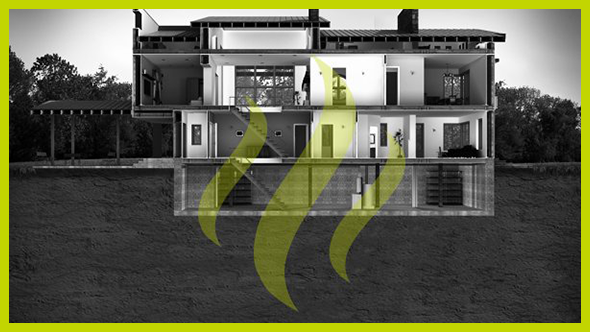Vapor and Phase I Environmental Site Assessments

by Paul Zovic
Each year over 300,000 Environmental Site Assessments (ESA) are completed in the United States on sites large and small. Commonly required by lenders as part of pre-acquisition / lending due diligence, the ASTM E1527 Phase I ESA standard has become the generally accepted process for site assessments. The ASTM standard has been in effect since 1993 and has always had as its goal the identification of “Recognized Environmental Conditions” (REC) in connection with the property in question. The ASTM’s REC definition and the standard’s process for REC identification are firmly planted in the environmental professionals’ vernacular. What is not so established and is at times confusing for some users and preparers alike, is how to incorporate vapor migration / encroachment / intrusion into the Phase I process.
Environmental professionals rely on guidance for screening processes, assessment guidelines, and exposure limits developed by the EPA and many states. Further, ASTM International has published standards for evaluating both vapor encroachment (the migration of vapors from a release of volatile organic compounds (or vapor-forming chemicals) into the ground to anywhere onto, or near, a property) and vapor intrusion (the migration of vapors into a building’s interior space). Nevertheless, the debate over the use of the terms “Vapor Encroachment Concern,” and “Vapor Intrusion Concern,” in a Phase I report and whether either concern represents a REC continues.
Some professionals (both technical and legal) recommend completing “Tier 1 vapor screen” (ASTM D2600) as part of a Phase I ESA, claiming that the process “doesn’t add material cost,” since much of the information to assess vapor conditions is already part of the Phase I. In fact, some consultants even reference using a Tier 1 screen, even if not specified in the Phase I scope of work.
Although the EPA “All Appropriate Inquiries” rule is silent on the concept of vapor migration and assessment regardless of how one may view the vapor screening standard and site assessment standard, environmental professionals must remember that the ASTM Phase I standard clearly states that a REC is “the presence, or likely presence, of any: (1) due to release to the environment; (2) under conditions indicative of a release to the environment; or (3) under conditions that pose a material threat of a future release to the environment.” The standard also notes that the hazardous substances or petroleum products in, on, or at a property point of release might not be on the subject property and that hazardous substances and petroleum products move in various forms, “including, for example, solid and liquid at the surface or subsurface, and vapor in the subsurface.”
From a practical standpoint, I think most knowledgeable environmental professionals consider (and have always considered) a Vapor Intrusion Concern (VIC), where contamination of volatile organic compounds is directly underneath a building, a REC because such a condition presents a health concern (and consequently cannot be a de minimis condition).
There is less agreement however regarding the use of “Vapor Encroachment Concern,” (where contamination isn’t necessarily underneath the building but anywhere on the property). Some professionals argue that so long as there is no risk of the vapor migrating into the building (and consequently no health risk), and the contamination originates from an off-site release for which the target property owner would not be liable, the VEC would not be considered a REC.
The identification of Vapor Encroachment/Intrusion Conditions and provisions relating to reporting and conclusions are beyond the scope of Phase I assessment and the bottom line may perhaps be that Environmental Professionals should consider all information, including migration of hazardous substances or petroleum products in the vapor phase, in the identification of Recognized Environmental Conditions.
About the author
Paul Zovic has over 35 years of experience with due diligence, compliance auditing, and other environmental programs. Paul has been involved with over 3,000 single and multi-phase assessments and compliance projects across the country at sites including defense contractors, mining operations, chemical and pharmaceutical facilities, municipal brownfields; at properties up to 1,500 acres.
An ASTM member since 1993, Paul is very active with the E50.02 committee task groups – working on site assessment standards. He is one of only nine environmental professionals in the country selected by ASTM International to teach the Phase-I and Phase-II Site Assessment Standards to consultants, lenders, attorneys, developers, landowners, and regulators nationwide.
Click Here to Learn More about ERIS’ New Vapor Tool
